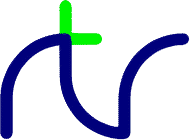
The company was established in 1983 to supply BBC BASIC interpreters for the Zilog/Mostek Z80 and Intel 80x86 ranges of processors. The Z80 version of the interpreter was incorporated (in PROM) in the Cambridge Computer (Sinclair) Z88 and in the Amstrad NC100/150/200 Notepad range. It was also supplied as standard with the BBC Micro Z80 Second Processor, and was available on disk for the Torch, Wren Executive, Tatung Einstein, RML 480Z and Amstrad CPC664/6128 computers. In each case the interpreter was customised to suit the graphics, sound etc. capabilities of the different machines. A generic version of BBC BASIC is available for Z80-based machines running the CP/M Operating System, although this version does not support machine-specific features such as graphics.
As well as the generic IBM-compatible PC version of BBC BASIC, customised 80x86 versions for the Victor Sirius 1, Research Machines Nimbus and the Acorn Master 512 were produced. The Nimbus version was integrated with Research Machines' own software emulation of the BBC Micro hardware environment, to produce the most BBC Micro-compatible of all the 'clone' versions of BBC BASIC.
A unique feature of the BBC Micro was the inclusion of a teletext character generator chip, giving the machine a native Viewdata (Videotex) compatible screen mode - MODE 7. Although not incorporated as part of the interpreter, an emulator of this mode for IBM compatible PCs is supplied with BBC BASIC (86) as a RAM-loadable utility. This program makes use of one of the less common EGA/VGA modes, in which 512 different character shapes can be defined, to provide a 100% emulation of the BBC Micro's MODE 7 hardware. Because it uses a text mode rather than a bit-mapped graphics mode, this emulator runs lightning fast and features a hardware cursor.
As a spin-off from the MODE 7 emulator, a fully-fledged Viewdata-compatible terminal program VIDEOTEX is available as shareware. Again, this provides a complete emulation of the Videotex display standard, including the difficult-to-implement features such as "held graphics" and double-height.
Late in 2001 BBC BASIC for Windows (BB4W) was released. This has a Graphical User Interface and many additions to the language. Compatibility with the BBC Micro and Acorn Archimedes is improved, and MODE 7 emulation is built-in as standard. This major new development shows our commitment to supporting the BBC BASIC language.
In 2011 we released LB Booster (LBB), a near 'clone' of Liberty BASIC but which runs much faster, fixes many bugs and limitations, and generates much smaller executables. LB Booster builds on our experience with the BBC BASIC language since it works by translating the Liberty BASIC program into BBC BASIC and then running it using the BBC BASIC for Windows runtime engine.
In 2015 we released BBC BASIC for SDL 2.0 (BBCSDL), a cross-platform version of BBC BASIC which runs on Windows, Linux (x86), Mac OS-X, Raspberry Pi (Raspbian), Android and iOS. Based on the Simple DirectMedia Layer (SDL) this version provides a very high degree of compatibility between the supported platforms, whilst maintaining good comptibility with BBC BASIC for Windows.
In 2020 two new versions of BBC BASIC were released: a set of Console Mode editions and an in-browser edition of BBC BASIC for SDL 2.0. The former have no support for sound, graphics, mouse input etc. but are lightweight and will run on most Operating Systems; they assume a VT-100 compatible terminal, which can even be remotely connected via a serial link or a network. The latter will run in most mainstream desktop and mobile browsers; its compatibility with the other editions of BBCSDL is very good.